#mayan artifacts
Explore tagged Tumblr posts
Text
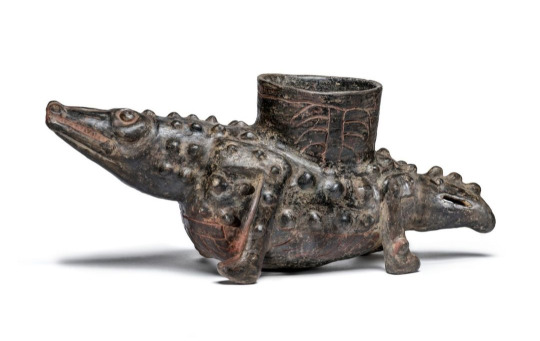
Mayan croc vessel, Mexico AD 300-600, Los Angeles Country Museum of Art
419 notes
·
View notes
Text

Mayan Altar Used to Sacrifice Children Found in Ancient ‘City of the Gods’
An altar from the Teotihuacan culture, at the pre-Hispanic heart of what became Mexico, was discovered in Tikal National Park in Guatemala, the center of Mayan culture, demonstrating the interaction between the two societies, Guatemala's Culture and Sports Ministry announced this week.
The enormous city-state of Tikal, whose towering temples still stand in the jungle, battled for centuries with the Kaanul dynasty for dominance of the Maya world.
Far to the north in Mexico, just outside present day Mexico City, Teotihuacan — "the city of the gods" or "the place where men become gods" — is best known for its twin Temples of the Sun and Moon. It was actually a large city that housed over 100,000 inhabitants and covered around 8 square miles.
The still mysterious city was one of the largest in the world at its peak between 100 B.C. and A.D. 750. But it was abandoned before the rise of the Aztecs in the 14th century.
Lorena Paiz, the archaeologist who led the discovery, said that the Teotihuacan altar was believed to have been used for sacrifices, "especially of children."




"The remains of three children not older than 4 years were found on three sides of the altar," Paiz told The Associated Press.
"The Teotihuacan were traders who traveled all over the country (Guatemala)," Paiz said. "The Teotihuacan residential complexes were houses with rooms and in the center altars; that's what the residence that was found is like, with an altar with the figure representing the Storm Goddess."
Researchers posted video on social media showing aerial footage of the altar as well as detail of the structure's interior.
"It's something unique in Guatemala, nothing similar had been found," Paiz said in a statement.
It took archaeologists 1½ years to uncover the altar in a dwelling and analyze it before the announcement.
Edwin Román, who leads the South Tikal Archaeological Project within the park, said the discovery shows the sociopolitical and cultural interaction between the Maya of Tikal and Teotihuacan's elite between 300 and 500 A.D.




Román said the discovery also reinforces the idea that Tikal was a cosmopolitan center at that time, a place where people visited from other cultures, affirming its importance as a center of cultural convergence.
María Belén Méndez, an archaeologist who was not involved with the project, said the discovery confirms "that there has been an interconnection between both cultures and what their relationships with their gods and celestial bodies was like."
"We see how the issue of sacrifice exists in both cultures. It was a practice; it's not that they were violent, it was their way of connecting with the celestial bodies," she said.
The altar is just over a yard wide from east to west and about 2 yards from north to south. It is about a yard tall and covered with limestone.
The dwelling where it was found had anthropomorphic figures with tassels in red tones, a detail from the Teotihuacan culture, according to the ministry's statement.




The researchers published their findings in the archaeological journal Antiquity.
The researchers made their announcement less than a year after a hidden Mayan city was discovered in a dense Mexican jungle by a doctoral student who unknowingly drove past the site years ago on a visit to Mexico.
Tikal National Park is about 325 miles north of Guatemala City, and the discovery site is guarded and there are no plans to open it to the public. Tikal, a UNESCO World Heritage Site, reached its peak between 200 and 900 AD when Mayan culture encompassed parts of what are now Guatemala, Mexico, Belize, El Salvador and Honduras.
Teotihuacan, famous for its pyramids of the sun and the moon, is located about 25 miles northeast of Mexico City. That culture reached its peak between 100 and 600 AD.


#Mayan Altar Used to Sacrifice Children Found in Ancient ‘City of the Gods’#Tikal National Park#Teotihuacan culture#Kaanul dynasty#Teotihuacan#“the city of the gods”#Aztecs#Teotihuacan altar#ancient artifacts#archeology#history#history news#ancient history#ancient culture#ancient civilizations
25 notes
·
View notes
Text
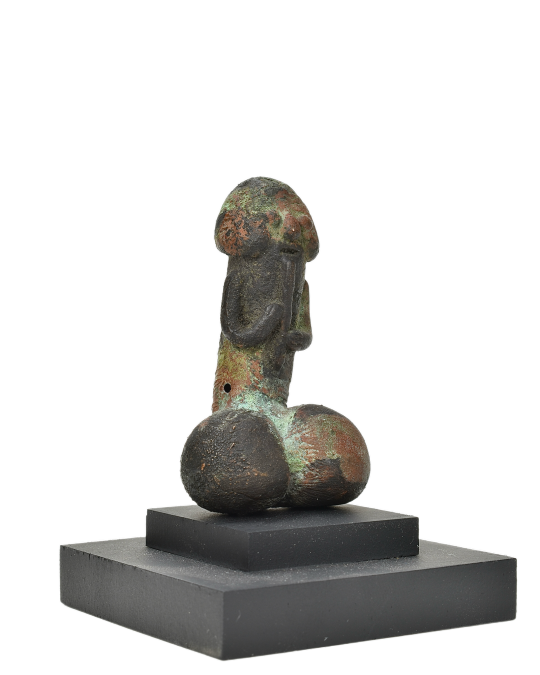
Erect Phallic imagery was crucial in Moche’s art and symbolism, carrying deep cultural and religious significance. Integrating a human flutist element within the phallus conveys multiple layers of meaning. The flute is often associated with fertility and agricultural rituals, suggesting its use in ceremonies intended to invoke prosperity and divine favor. The depiction underscores the Moche’s sophisticated understanding of the interconnectedness of music, fertility, and spiritual well-being. Music, an integral part of Moche ceremonies, was believed to enhance ritual potency and communicate with the divine. The stature of an erect penis and large testicles further emphasize fertility and potency, making this artifact a powerful symbol within Moche cultural and religious practices.
#ancient art#ancient history#archaeology#pre-columbian#art history#artifacts#inca#aztec#mayan#south america#moche#musician#flutist#erect penis#phallus
51 notes
·
View notes
Text
Dad, away visiting his mom, texting family: Here’s a photo of the sundial my grandparents had. Not sure how it’s supposed to work. My mom is giving it to us.
*photo*
Me: …
Me: ..mm.. ah.
Me: Quick check have their been any unexplained curse symptoms in the family? No reason for asking.
#ghost posts#WHAT ON EARTH#AND WHERE DO YOU THINK YOURE GOIGN TO PUT IT#got that cursed ancient artifact rizz lol#genuinely wondering where it came from#haven’t quite seen something like it before#makes me think of the Mayan doomsday thing#but no idea where it’s actually from#for all I know is it’s just some mass produced stamp#anway it’s a little creepy. to me.#not my taste at least. not my dad’s either. and def not my mother’s.#so again why is he bringing it home 😫
14 notes
·
View notes
Text

Ever wonder about early calculations in mapping the galaxy? This here is one of these first written records of interstellar astrophysics. This is panel 50 of the Dresden Codex, from the planet Yucatán. This describes some of the early accounts of remote probes coming back from space, known to the Yucatánian as the Outerworld.
Fun fact about the Yucatán people: they used a base 20 numerical system, which is a very different mathematical formula than the Universal base 10 which originated from the Arabian star cluster
Learn more about the Dresden Codex with our archive here
#del speaks#ooc the number system is a real thing with the Mayan#ooc the Dresden codex is a Mayan artifact detailing their mythology including mention of the Outerworld which was very likely outer space#jedi posting#jedi archives
7 notes
·
View notes
Text
Taíno Civilization Is A Hidden Gem in Pre-Columbian History
Embark on a journey to unravel the secrets of the Taíno Civilization, a concealed marvel in Caribbean history, and delve into their artistry, legacy, and cultural influence.
Taíno Civilization and Cultural Artifacts: Taíno Celt, Depicting ‘Bird-Man’ Motif, AD 1300 – AD 1400 Serpentine-23.6 x 17.2 x 4.5 cm. Image: Barakat Gallery Embark on a journey to unravel the secrets of the Taíno civilization and art at Barakat Gallery. Experience the concealed marvels in Caribbean history and delve into their artistry, legacy, and cultural influence. BY ALEX TOWNASTALLI,…

View On WordPress
#Aztec#Caribbean History#Cultural Artifacts#Cultural Diversity#Mayans#Olmec#Taíno Art#Taíno civilization#Taíno Legacy#Toltec
10 notes
·
View notes
Text
Day 29: Guatemalan Wooden Masks: Tradition, Craftsmanship, and Cultural Inspiration
— Introduction Guatemalan wooden masks are vibrant artifacts that embody the culture, history, and artistic expression of the country’s diverse ethnic groups. Rooted in centuries-old traditions, these masks have served many purposes in religious rituals, celebrations, and storytelling, providing an intimate glimpse into the cultural identity of Guatemala. Whether used in traditional dances or…
#Architexture#article#Artisan Craft#Authentic Guatemalan Art#Colorful Masks#Craftsmanship#Cultural Inspiration#Cultural Masks#Decorative Masks#Festival Masks#Guatemala Handicrafts#Guatemalan#Guatemalan Artifacts#Guatemalan Culture#Guatemalan Folk Art#Guatemalan Heritage#Guatemalan Masks#Guatemalan Wooden Masks: Tradition#Handmade Masks#History#Indigenous Art#Latin American Crafts#Mayan Masks#Photography#tradition#Traditional Masks#Tribal Masks#Wooden Handicrafts#Wooden Masks
2 notes
·
View notes
Text
The Crystal Skulls—one of the greatest archaeological mysteries or the biggest hoax ever? 🔮 Some say these skulls were created by ancient civilizations and hold supernatural energy, while others believe they were made much more recently. Do they unlock hidden wisdom, or are they just a well-crafted myth?
#Crystal Skulls#conspiracies#Ancient Artifacts#Mystical Relics#Lost Civilizations#think for yourself#Hidden Knowledge#Mayan Secrets#History Mysteries#Unsolved Secrets
3 notes
·
View notes
Text

#happy valentines :)))#nd#henrik has fallen for meeeee#but also worked on this in vc with friends#love the bed of mayan artifacts cradling him#not my idea#but so inspired#my post#scarlet hand
0 notes
Text
If only it hadn’t been removed from the original packaging.
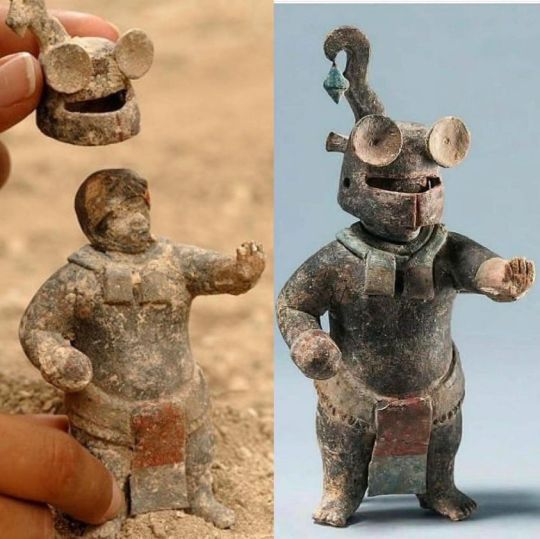
1,500-year-old Ceramic Maya Figurine with Removable Helmet, from El Perú-Waka', Petén, Guatemala.
928 notes
·
View notes
Text



Mask of Chac of the Mayan people (AD 200)
1 note
·
View note
Text
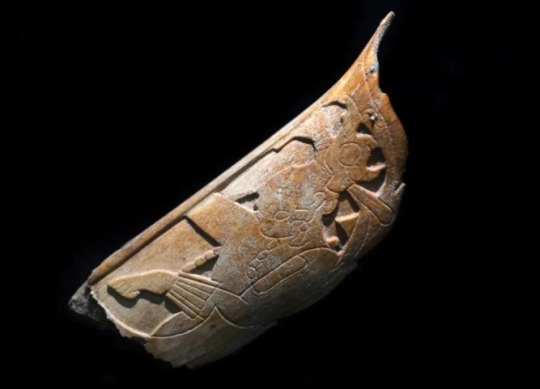
Ancient Mayan Nose Ring Made of Human Bone Found in Mexican
More than a thousand years ago, a priest in Mexico donned a bone nose ornament and conducted a ceremony in honor of K’awiil, the Mayan god associated with maize and fertility.
At least that’s what experts believe happened after they discovered a nose ring made from human bone at the Archaeological Zone of Palenque in Chiapas, according to an Aug. 29 news release from Mexico’s National Institute of Anthropology and History. It’s the first find of its kind from the site.
Experts described the artifact as “una nariguera,” which translates to a nose ring in English. However, photos of the object show that it was more like an ornament that sat atop the wearer’s nose.
The 2.5-inch-long and 2-inch-wide adornment is made of a human tibia (leg) bone, archaeologists said. It was likely used by elites, specifically rulers and priests, in attempts to personify their god, K’awiil.
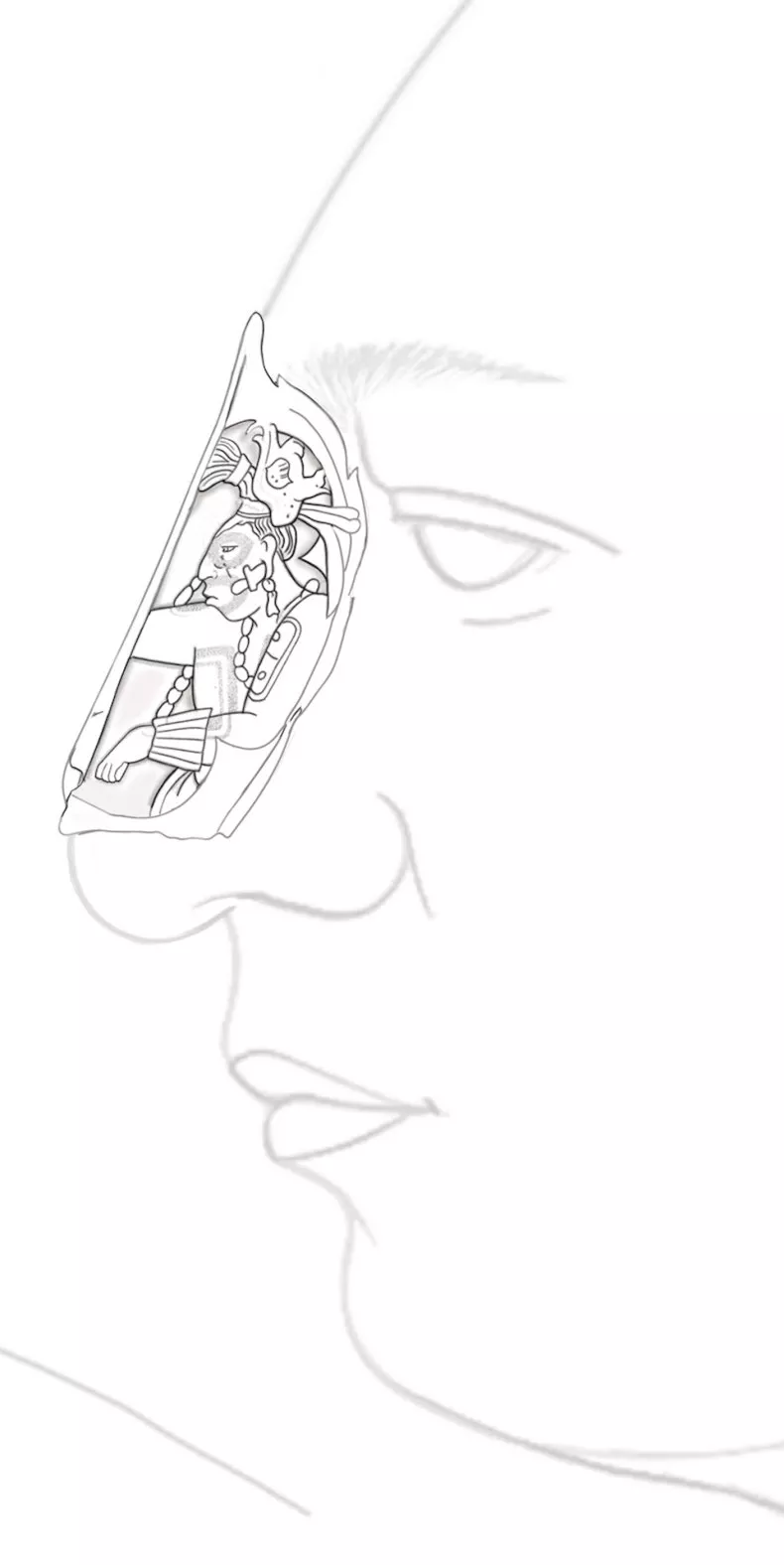
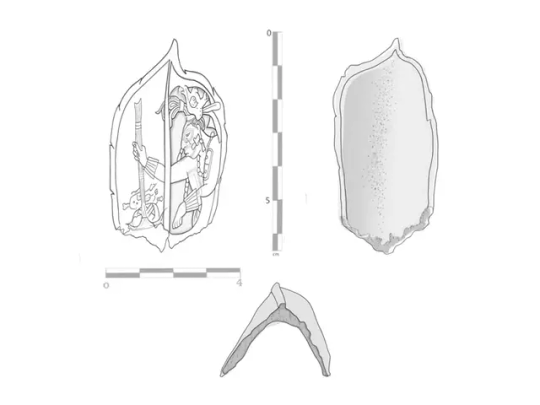
Experts said the bone artifact is engraved with a depiction of a man in a headdress and ornate jewelry. His left arm has the Mayan glyph “ak’ab’,” which means darkness or night. He is holding a long thin object, and beneath him is a human skull and long bones placed on a bundle of cloth.
The depiction in the bone expresses communication with gods and ancestors, according to experts.
The nose piece was unearthed from a ritual deposit buried between 600 and 850, archaeologists said. The deposit commemorated the building of a new structure, known as House C, at a palace.
Officials said they also found animal bones, obsidian blades and charcoal in the deposit.
Chiapas is in southeastern Mexico.
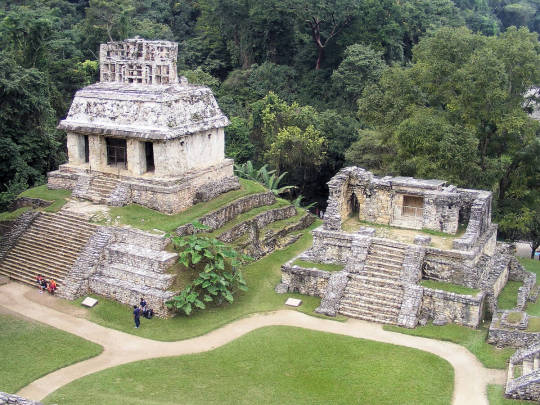
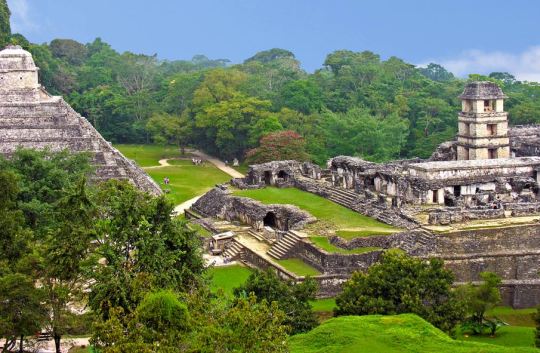
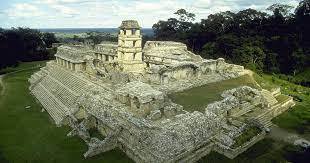
#Ancient Mayan Nose Ring Made of Human Bone Found in Mexican#Archaeological Zone of Palenque#ancient artifacts#archeology#archeolgst#history#history news#ancient history#ancient culture#ancient civilizations#mayan history#mayan mythology#mayan art
293 notes
·
View notes
Text

Pre-Columbian civilizations across the Americas developed various adhesives used in everyday applications and ceremonial contexts. These adhesives were crafted from natural materials, such as plant resins, tree gums, and animal-based glues, with their use spanning numerous cultural groups, including the Maya, Aztec, Inca, and Moche. By understanding the properties of their surrounding environment, these cultures could create adhesives suitable for tool-making, repairing objects, crafting jewelry, and producing artwork.
This article will focus on the adhesives used by these ancient cultures, how they were made, and the specific applications seen in archaeological findings.
Moche Wood Scepter c. 400-800 AD. closeup view
Moche wood scepter w/ inlaid Shell and Stones
Materials Used in Pre-Columbian Adhesives
Pre-Columbian adhesives were primarily sourced from plant resins, tree gums, and animal derivatives. Each civilization developed unique techniques to harvest and process these natural materials to suit their environmental and cultural needs.
Plant Resins and Tree Gums
Plant resin was one of pre-Columbian cultures’ most widely used adhesive materials. Resins such as copal, commonly used by the Maya and other Mesoamerican civilizations, were derived from trees in the Burseraceae family. The Maya used copal resin for both ritual and practical purposes. It was often burned as incense in religious ceremonies, but in a solid form, it was an adhesive for binding materials such as stone and wood.
The Aztecs also exploited natural resins, particularly pine resin. Pine resin was commonly mixed with natural powders like ash or powdered stone to enhance its adhesive properties. This combination was often applied to tools, pottery repairs, or affixing feathers and stones to wooden or clay artifacts.
Animal-Based Adhesives
In some pre-Columbian cultures, animal-based adhesives were also used, although these were less documented than plant resins. These adhesives were typically made by boiling animal hides, bones, or tendons to produce gelatinous substances that, when cooled, formed a strong bond. Andean civilizations, such as the Inca, likely employed these adhesives, though less direct evidence survives than their Mesoamerican counterparts.
For example, animal-based glues may have been used in textile production to attach decorative elements such as feathers to ceremonial garments or headpieces. However, animal-based adhesives’ exact prevalence and variety are not as well-documented as resin-based adhesives.
Methods of Production and Application
The production of adhesives in the pre-Columbian Americas required an understanding of local materials and their properties. Though methods varied between cultures, specific techniques were standard across regions.
Resin Extraction and Processing
Plant resins like copal were often harvested by cutting into the bark of resin-producing trees. The resin would ooze out and harden upon exposure to air, after which it could be collected and stored. When needed, the hardened resin was heated over a fire or other heat source until it became a thick liquid. Once liquefied, it could be applied to objects as an adhesive.
For specific applications, additives like powdered stone or pigments were mixed into the resin to adjust its texture or increase its durability. For example, this practice was common in affixing decorative stones to jewelry or securing blade heads to wooden shafts for tools and weapons.
Paracas Wood, Stone and Feather Club for Sale
Paracas wooden club w/inlaid Stone
Application Techniques
Adhesives were applied directly to the surfaces that needed bonding, often in thin layers. When used to repair pottery, artisans would apply the glue to the broken edges and carefully press the pieces together, holding them in place until the resin hardened. In some cases, additional adhesive was applied over the joints to reinforce the bond.
For weaponry and tools, adhesives were often used with other fastening techniques. For example, in Mesoamerican cultures, resin might have been used to help secure stone blades to wooden handles, followed by wrapping the joint with plant fibers for additional strength.
Cultural Examples of Adhesive Use
Several archaeological findings highlight the importance of adhesives in pre-Columbian material culture. Below are examples of how various civilizations across the Americas used adhesives.
Maya Copal Resin
The Maya extensively used copal resin for ceremonial incense and as an adhesive for repairing ceramics and affixing small decorative stones or shells to larger objects. For instance, archaeologists have found examples of jade and shell inlays on wooden objects in Maya tombs held in place by hardened copal resin.
Aztec Featherwork
Featherwork, a vital art form in Aztec and Maya civilizations, required adhesives to attach vibrant bird feathers to textiles, shields, and headdresses. In Aztec society, feather artisans, known as amantecas, used a combination of plant-based resins, such as pine resin, to bind the feathers in place. The featherwork pieces served decorative and religious purposes, demonstrating the adhesive’s role in crafting items of cultural significance.
Inca Wood and Stone Artifacts
In the Andean regions, particularly within the Inca Empire, adhesives were employed in various woodworking and stone-carving techniques. For example, adhesives were used to fasten metal or stone inlays into wooden objects, such as ceremonial staffs or chicha cups. Additionally, using resin-based adhesives for pottery repair has been suggested by analyzing broken and mended artifacts found in Inca archaeological sites.
Moche Metalworking
The Moche civilization of northern Peru is known for its advanced metallurgy and intricate artwork. Moche artisans likely used plant-based adhesives in their fine metalworking to affix precious stones or inlays into metal pieces. Some surviving Moche metal objects, such as ornamental plaques and jewelry, show evidence of adhered stone inlays using organic adhesives.
Moche Pututu Trumpet Shell Horn front side view
Moche Pututu Shell – Waylla Kepa w/ inlaid Silver Mouth Piece
Wari Mask Product for Sale
Wari False Head w/inlaid Shells
Conclusion
Pre-Columbian adhesives played a crucial role in the daily and ceremonial lives of the Maya, Aztecs, Inca, and other ancient civilizations. By utilizing plant resins like copal and pine and possibly animal-derived glues, these cultures produced durable and versatile adhesives for repairing ceramics, crafting tools, and creating intricate works of art. The widespread use of these adhesives, as demonstrated by surviving artifacts, provides insight into the technological sophistication of these pre-Columbian societies. Their understanding of natural resources allowed them to create functional and integral materials for their cultural and artistic practices, ensuring that these innovations would endure through the ages.
How to Determine Cotton Fabric from Camelid Fibers Accurately?
Research Academic Papers and News Articles
#ancient art#ancient history#archaeology#pre-columbian#art history#artifacts#inca#aztec#mayan#south america#ancient technology
9 notes
·
View notes
Text






September 2022
#photo#they had the mayan codex and when I showed my parents they slowly started screaming and continued their ‘they steal everything from us!!’#godd it was so sad seeing those mayan tablets tbh… just knowing they chipped them off n put them in their backpacks#and seeing serial numbers on some artifacts is just as wild n sad#the Rosetta Stone is actually breaktaking#always the codex on display is a replica cause even they know how precious it is to display it
1 note
·
View note
Text
The Best News of Last Month - June 2024
💡Eco-friendly innovations building a better future—literally
1. Bill Gates-backed startup creates Lego-like brick that can store air pollution for centuries: 'A milestone for affordably removing carbon dioxide from the air'

The Washington Post detailed a "deceptively simple" procedure by Graphyte to store a ton of CO2 for around $100 a ton, a number long considered a milestone for affordably removing carbon dioxide from the air. Direct air capture technologies used in the United States and Iceland cost $600 to $1,200 per ton, per the Post.
2. Violent crime is down and the US murder rate is plunging, FBI statistics show

Violent crime dropped by more than 15% in the United States during the first three months of 2024, according to statistics released Monday by the FBI.
The new numbers show violent crime from January to March dropped 15.2% compared to the same period in 2023, while murders fell 26.4% and reported rapes decreased by 25.7%.
3. She thrifted this vase for $4. It turned out to be an ancient Mayan artifact

Anna Lee Dozier, paid about $4 for what she assumed was a reproduction of a Mayan vase. It turned out to be the real deal: an artifact that’s at least 1,200 years old from the ancient civilization. And now, it's headed back to its homeland.
4. U.S. Marshals Find 200 Missing Children Across the Nation During Operation We Will Find You 2

Of the 200 children found, 173 were endangered runaways, 25 were considered otherwise missing, one was a family abduction, and one was a non-family abduction. [...] 14 of the children were found outside the city where they went missing.
5. Amazon's ditching the plastic air pillows in its boxes

Amazon said the change will help it use nearly 15 billion fewer plastic pillows annually. The paper fillers are made from 100% recyclable materials and are curbside recyclable. The company began a transition away from plastic filler in October 2023 when it announced its first U.S. automated fulfillment center to eliminate plastic-delivery packaging.
6. Supreme Court rejects bid to restrict access to abortion pill

In a blow for anti-abortion advocates, the Supreme Court on Thursday rejected a challenge to the abortion pill mifepristone, meaning the commonly used drug can remain widely available. The court found unanimously that the group of anti-abortion doctors who questioned the Food and Drug Administration’s decisions making it easier to access the pill did not have legal standing to sue.
7. Wild horses return to Kazakhstan steppes after absence of two centuries

A group of the world’s last wild horses have returned to their native Kazakhstan after an absence of about 200 years. Seven Przewalski’s horses, the only truly wild species of the animal in the world, flown to central Asian country from zoos in Europe
That's it for this month :)
This newsletter will always be free. If you liked this post you can support me with a small kofi donation here:
Buy me a coffee ❤️
Also don’t forget to share this post with your friends.
3K notes
·
View notes
